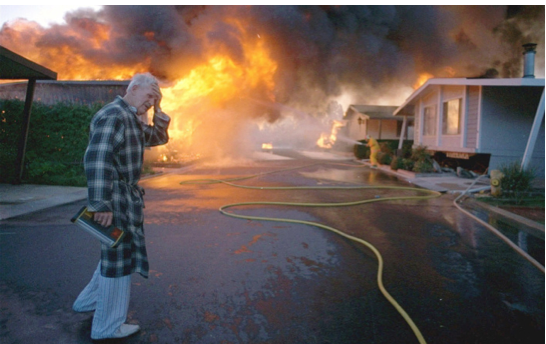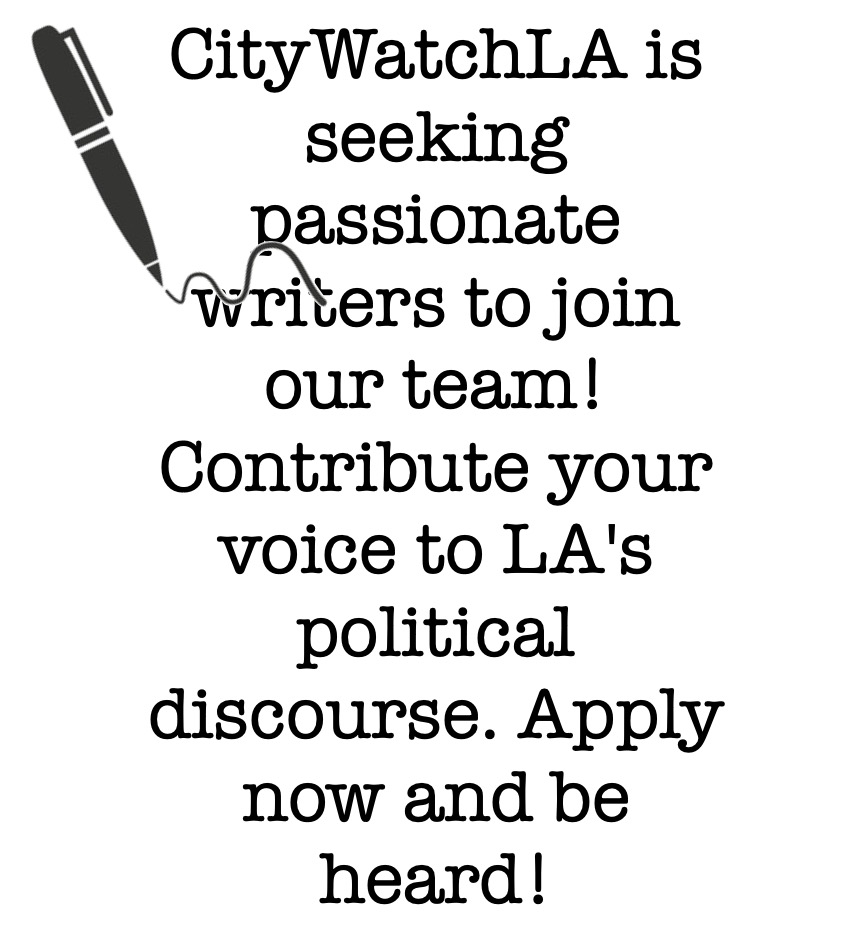NEIGHBORHOOD POLITICS-When the Big One hits chances are that everyone all over the city will be demanding action. Right now.
And, unless you are the mayor or one of the favored few, chances are that you won’t be heard over the clamor of four million other Angelenos.
If it’s at night and you are on a nine-to-five schedule, chances are you will be at home with your family. During the day, you may be at work, your children at school, and your mother-in-law at a senior center.
Previous articles have raised concerns about the state of readiness of Los Angeles for a Katrina-level emergency.
But no matter how much money or how many people are working on mitigating the effects of a disaster, the reality is that for the first 72 hours your survival will be up to you and your neighbors. How well you cope will depend on how well you plan now.
We can’t force our leaders to listen but each of us has the power to ensure that our homes and families are better prepared to ride out a disaster on our own terms.
It is your responsibility to assemble emergency supply kits for your home, work and car, addressing what you and your family will need immediately after a disaster strikes. And you and your loved ones need to put personal plans in place so that everyone knows what to do and how to contact each other if they are away from home.
Kits should contain items specific to immediate requirements and be updated regularly. Pre-packaged kits generally have a lot of things you won’t use and be missing items you consider essentials. Lists are available from lots of places, but you should look at yours at different times of the year to assess what you actually use in a given day and what you would want to have in specific scenarios.
For the car it might be tools to break out of it (and into others to rescue people), a wind-up flashlight and radio, first aid kit and medications (specific to those who use the car), snacks, water, extra clothing, and footwear that can handle hikes over broken glass and rock.
Strappy sandals and a micro-dress might be great for a party when you drive from your garage to valet parking, but when your car is caught in a mudslide on the way home and you need to hike out in a torrential winter storm. . .
At home you need to work out various evacuation plans for each type of emergency: Food and water for everyone, wind-up radios and chargers, tools, ways to communicate your status to the city and to family outside. A plan for pets. Get your kids on board by having them plan to evacuate their favorite toy.
What will you do for heat in the winter, how to stay cool in a heatwave? Do you know how to turn your gas off? These are very basic survival questions that you must address, or you put your family and yourself at risk.
If someone in your household is dependent on oxygen or an electrically powered device, what is your back-up? If you are on the fourth floor of an apartment building and have a bed-ridden grandfather, how are you going to get him downstairs if there is a fire?
Is the city aware of friends or family members who don’t live with you but will need help?
There will also be needs that you may not be able to meet but could be available close at hand. Is there a doctor down the street, a nurse, an electrician, someone with a chainsaw, a pool for extra water?
Poll your neighborhood for tools and skills and, while you are at it, check in on those who may need extra assistance to prepare for and if (when) a crisis comes to call.
The Emergency Management Department (EMD) has put boots on the ground rolling out the Ready Your Los Angeles Neighborhood (RYLAN) to encourage neighbors to formulate plans now.
RYLAN “gives you the steps to take immediately after a disaster to help keep you and your family safe. It provides the tools to prepare and organize your neighborhood to respond together in that first hour after a disaster to reduce injuries, protect your property and the environment, and most importantly, to save lives.”
The goal is to use residents-in-place in the immediate aftermath of a disaster to assess their homes and those of their neighbors, take action for the ill and handicapped on their streets, and have plans to address food, water, fuel, transportation, communication and first aid.
This is commendable. But when people are in panic mode, they need to have the comfort of authority figures with credible knowledge telling them what to do, that they are not alone, and that help will be coming after more serious concerns are contained.
Absolutely, there are individuals in our communities who know their neighbors and have initial plans to secure the safety of people and property. But there must also be boots-on-the-ground trained professionals who have established relationships with these local leaders and can provide the necessary oversight, support and problem-solving as well as an assessment of local situations, communicate effectively up and down the chain of command, and be able to implement an integrated citywide approach to recovery.
The city needs to fund and the EMD needs to find those leaders now; they cannot rely on volunteers who might move, die, or become incapacitated through age or illness. They need to introduce themselves to every neighborhood to learn the challenges they will face in different areas of the city, be they be crumbling high-rises, limited through-streets, etc.
While there has been good response to RYLAN in some locales of the city, not all areas are prepared. Making inroads into those other neighborhoods may take time and will not be easy, especially where people work multiple jobs, need childcare or lack transportation, and have hours that don’t jibe with City Hall-scheduled trainings. Since these are all too often marginalized neighborhoods, it is even more important to persevere.
Additionally, the EMD needs to aggressively target higher-risk neighborhoods such as those around the Port and in fire-prone and liquefaction zones.
Community outreach can be combined with getting to know your neighbors to ensure every Angeleno has a basic support system in place, not only in an emergency but always. It may take some sensitivity to work around privacy concerns, but this would establish a foundation to improve the quality of life in neighborhoods across the city.
Above all, act.
The response by the American government to the Coronavirus pandemic has been under-spectacular so far. We need plans, we need containment.
But at the same time, we can’t drop the ball on long-term preparedness for other Big Ones and their aftermaths.
Remember Katrina.
Two previous columns looked at what emergencies Los Angeles might face and what it has done so far to prepare. If you have concerns, you may want to contact your Councilmember to see what plans they have – Council District Offices could serve as bases for dissemination of information and supplies both in preparation for and in the event of a Big One – and to encourage the City Council to invest more in our safety.
(The Budget Advocates are an elected, all volunteer, independent advisory body charged with making constructive recommendations to the Mayor and the City Council regarding the Budget, and to City Departments on ways to improve their operations, and with obtaining input, updating and educating all Angelenos on the City’s fiscal management.) Edited for CityWatch by Linda Abrams.











